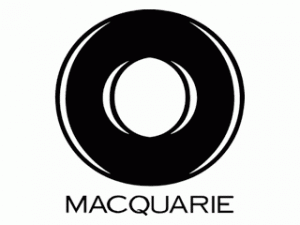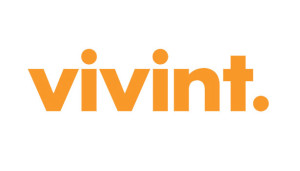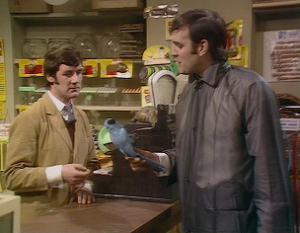 EntryPoint Networks is not a household name, but their successful municipal fiber project in Ammon, ID certainly is. With 75% of served residents taking service for as low as $43/mo for 100M/100M, Ammon stands as a poster child for how to get municipal fiber right on political, financial, and technology sides. I had a chance to discuss their method with VP of Sales and Marketing Devin Cox. There’s a lot that’s very similar to UTOPIA, but enough divergence that it stands out as unique. They’re set to make their pitch to Cedar City on Wednesday June 20 at 4:30PM in the city council chambers and reportedly have more unnamed cities in the wings.
EntryPoint Networks is not a household name, but their successful municipal fiber project in Ammon, ID certainly is. With 75% of served residents taking service for as low as $43/mo for 100M/100M, Ammon stands as a poster child for how to get municipal fiber right on political, financial, and technology sides. I had a chance to discuss their method with VP of Sales and Marketing Devin Cox. There’s a lot that’s very similar to UTOPIA, but enough divergence that it stands out as unique. They’re set to make their pitch to Cedar City on Wednesday June 20 at 4:30PM in the city council chambers and reportedly have more unnamed cities in the wings.
How it’s like UTOPIA
Cox had no hesitation to say that the “subscriber pays” model first adopted for UTOPIA deployment in Brigham City served as the basis for their model. Just like UTOPIA, the cost to deploy is spread over 20 years and will eventually be paid off in full. It’s an open access network that allows any provider to join and provide services. Much like UTOPIA, they have an open invitation to existing providers, including telco and cableco incumbents, to jump on the network and provide service. Most importantly, they use active Ethernet to ensure that each subscriber can get the full bandwidth of their connection.
The city is in the driver’s seat for most of the decisions. This includes how to finance the network, if subscribers will have legal ownership at the end, and who will operate, maintain, and manage it. EntryPoint sees their role as similar to DynamicCity in the early days of UTOPIA, to plan and build the network on behalf of the city they contract with. This does leave the possibility open for a city to partner with EntryPoint and UTOPIA at the same time, each of them filling slightly different roles.
And how it’s different
EntryPoint’s philosophy to network operations is to price it as low as possible to gain as much market share as possible. Since the vast majority of the cost is going to be construction and maintenance, it makes sense for them to get the actual service cost as low as possible to spread costs. In Ammon, this has driven the cost of 100M symmetrical service down to around $43/mo. UTOPIA doesn’t have this flexibility because of legacy debt, something that Payson will have paid off in a few years and cities who opted to refinance will have on the books until 2041.
Their provisioning system is also very different. Something DynamicCity was playing with was a self-provisioning portal. A customer could easily enable or disable services and switch service providers with a few clicks. This not only drives down costs, but it makes it very easy to add software-defined services as part of the package. This includes a point-to-point VPN/VPLS service that allows anyone to dynamically create and destroy private connections between any two points on the network. Examples include a route between a business and its remote workers, two gamers who want to go head-to-head, or families in the same city who want to share network resources like printers, storage, and so on.
They also bill those amounts very differently by splitting it into three buckets: network construction, network maintenance, and service provider fees. The network construction fee is the part that goes away in 20 years and is attached to your property tax bill. In Ammon, that fee has been just under $17/mo. Interestingly, they separately bill a “keep the lights on” network maintenance fee via the city’s utilities department. This is the cost to deliver service between any two points on the network, repair the network, and plan for future electronics swaps. This fee never changes no matter how many services you use or how much you use the network and currently is about the same as network construction. That bill exists as long as you use the service, but it can be suspended month-t0-month like many cable operators will do in towns with a lot of vacation homes.
The final part, the service provider fee, is paid straight to the ISP. With 100M/100M coming in around $10/mo of this, it’s hard to see that service providers actually make money at price points this low, but Cox claims that the provider costs are so low that the margins are actually quite high. UTOPIA provider SumoFiber participates on the network in Ammon as well, so I reached out for a comment. Per David Burr, they definitely make higher margins per customer, though that can vary depending on if they need to pull backhaul to interconnect or have local technicians for that market.
A way forward?
Let’s face it: the UTOPIA brand is pretty toxic politically. Even with covering operating expenses and making subscribers carry the full cost of expansion, it’s a hard sell to cities wary of the political fallout, especially when opponents will continue to harp on how things were a decade ago. In politics, facts take a back seat to whatever perceptions happen to get cemented early. UTOPIA also has its hands pretty full trying to meet the needs of existing members.
For all of these reasons, EntryPoint might be the best bet for any city who wants fiber but also wants to avoid political risk. As a resident of Cedar City, I’ll certainly be watching how it unfolds here pretty closely.
 The muni fiber train in Utah continues to pick up steam as Kaysville wraps up a RFP to build a municipal fiber system. UTOPIA confirmed that they are a bidder on the project which calls for a public-private partnership in which the city maintains some level of ownership or control while another party handles construction and operation of the network. The city’s goal to deliver gigabit services to all homes for $80 or less per month by May 2021. The project scope also includes connecting all city buildings to the fiber network.
The muni fiber train in Utah continues to pick up steam as Kaysville wraps up a RFP to build a municipal fiber system. UTOPIA confirmed that they are a bidder on the project which calls for a public-private partnership in which the city maintains some level of ownership or control while another party handles construction and operation of the network. The city’s goal to deliver gigabit services to all homes for $80 or less per month by May 2021. The project scope also includes connecting all city buildings to the fiber network.











